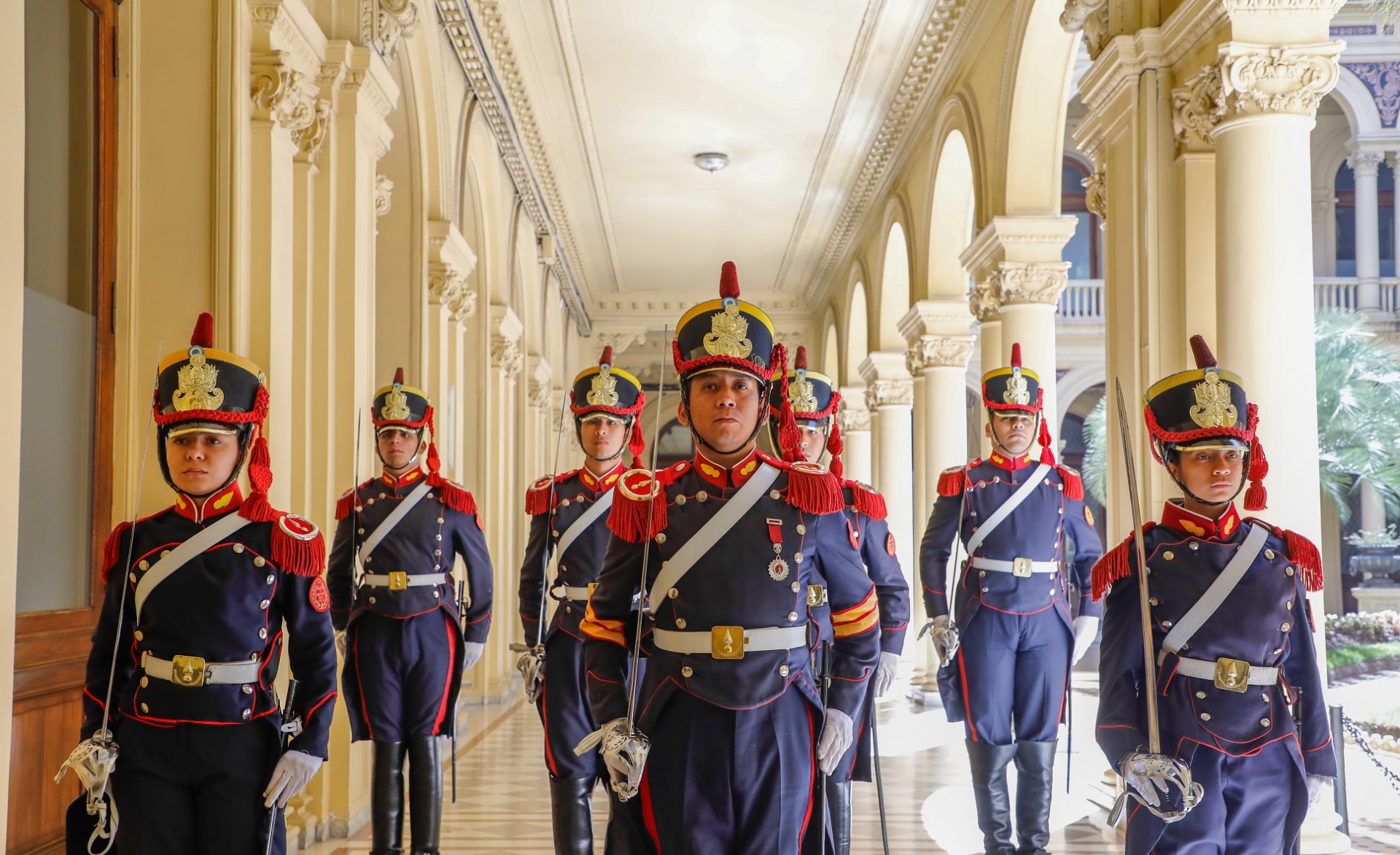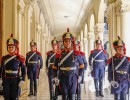In the month of San Martin, we proudly remember the historical uniform of the “General San Martin” Horse Grenadiers, used during the independence wars, and its evolution to the present. Each element of the uniform was carefully designed by the Father of the Nation, not only for its aesthetics, but also for its functionality in combat.
The uniform, a symbol of courage and responsibility, has changed over time. Currently, it is composed of the morrion, jacket, white gloves, pants and boots. Each of these pieces has a specific purpose.
The morrion is a high helmet with a burgundy plume, the national cockade, the shield with the pomegranate, the laces, the galapagos, the visor and the cheeks. Each of its parts was designed to provide protection in combat. It was originally made of black sole and is currently lined with blue fabric.
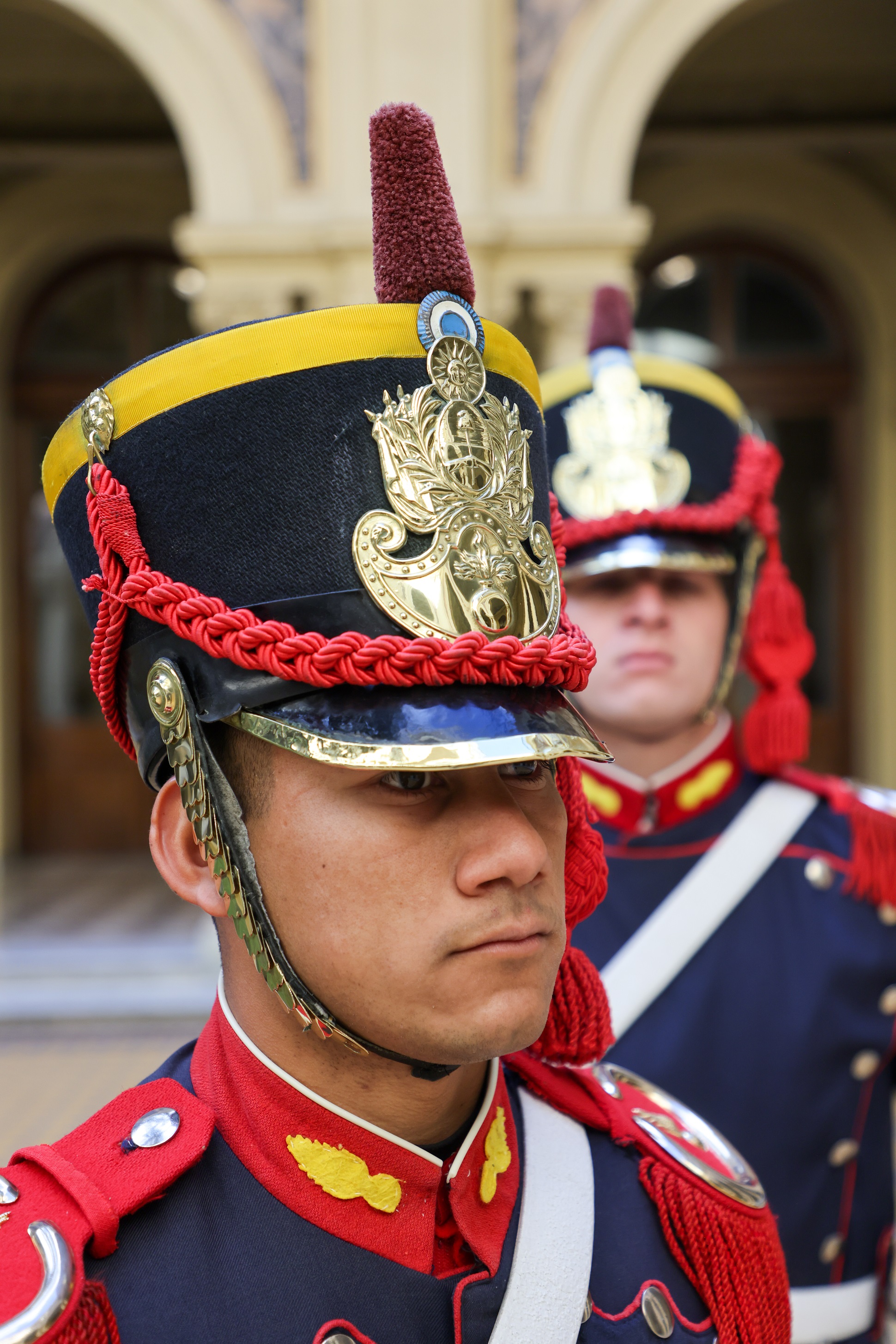
The plume differentiated the different regiments and battalions of the Army of the Andes during the War of Independence. The galapagos, located only on the left side of the morrion, protected that side of the head, as the grenadiers held the reins of the horse with the left hand and the saber with the right. These elements were two metal circles held by metal thread cords.
The cheekpiece, composed of golden metal scales, holds the morrion to the head and protects the face of the grenadiers against wounds from bladed weapons. Originally, these were wider and covered almost the entire cheek. The visor, besides protecting from the sun, kept the eyes upright against the enemy, since lowering the eyes was considered an act of cowardice, severely punished with dishonorable expulsion from the Regiment.
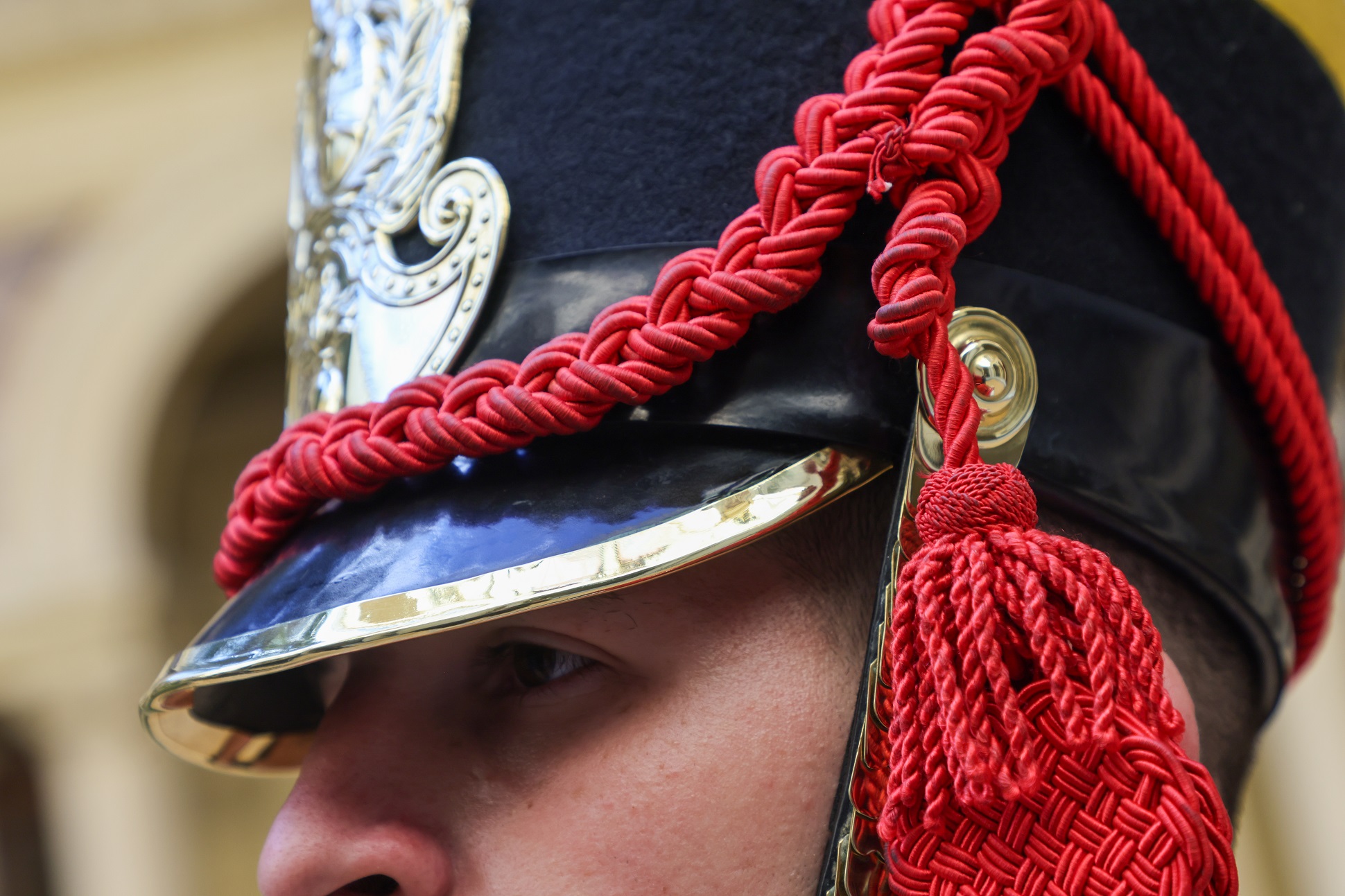
During the War of Independence, the morion carried the National Escarapela and a bronze grenade with the legend “Libertad y Gloria” (Liberty and Glory). Currently, the morrion carries a bronze shield with the National Coat of Arms, surrounded by the flags of the countries it liberated and a pomegranate with the flame representing the Regiment.
The blue jacket, with crimson piping, has a breastplate of the same color with a row of buttons on both sides and fabric pomegranates on the flaps. The collar of the jacket served as protection against wounds from bladed weapons and was made of hard leather to ensure good posture. The epaulettes protected the shoulders and were made of hard leather or brass or copper plate.
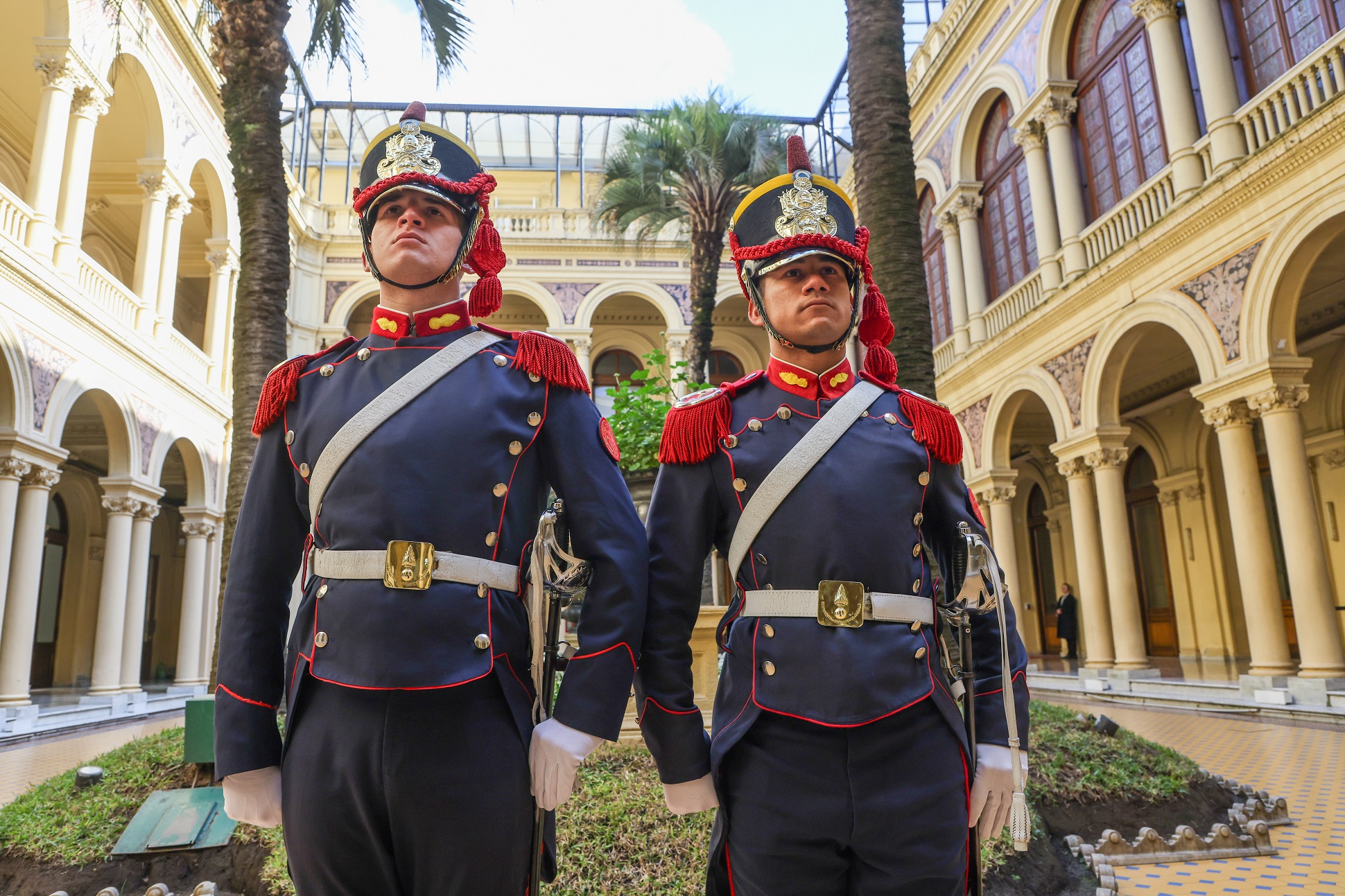
The bandolier, a white leather strap that holds the porta canana, the black leather cartridge case where the ammunition for the carbines used to be kept, is placed over the jacket.
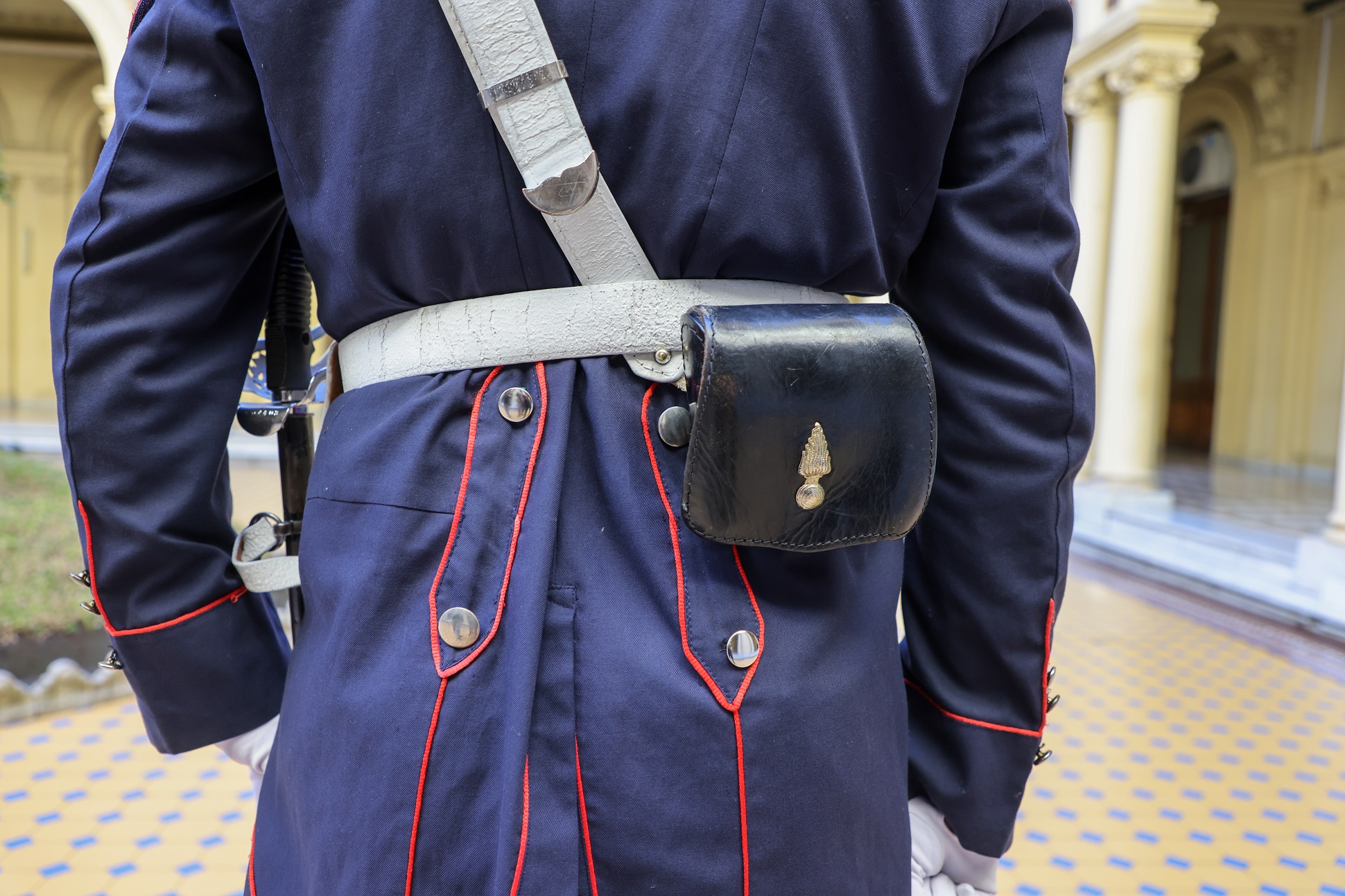
The belt, made of white leather, holds the sabre. It has a bronze buckle with the relief of a grenade and the legend “Regimiento de Granaderos a Caballo”. The buckler, also made of white leather, has a bronze hook where the ring of the scabbard is placed.
The saber used by the grenadiers is a German model for the cavalry of 1898, composed of a chrome-plated single-edged blade, a cup that protects the hands and a scabbard with a matte black painted ring, used only for ceremonies. The dragoon, a white leather shot, is attached to the saber cup and fits the grenadier's right wrist, preventing the saber from falling to the ground in combat.
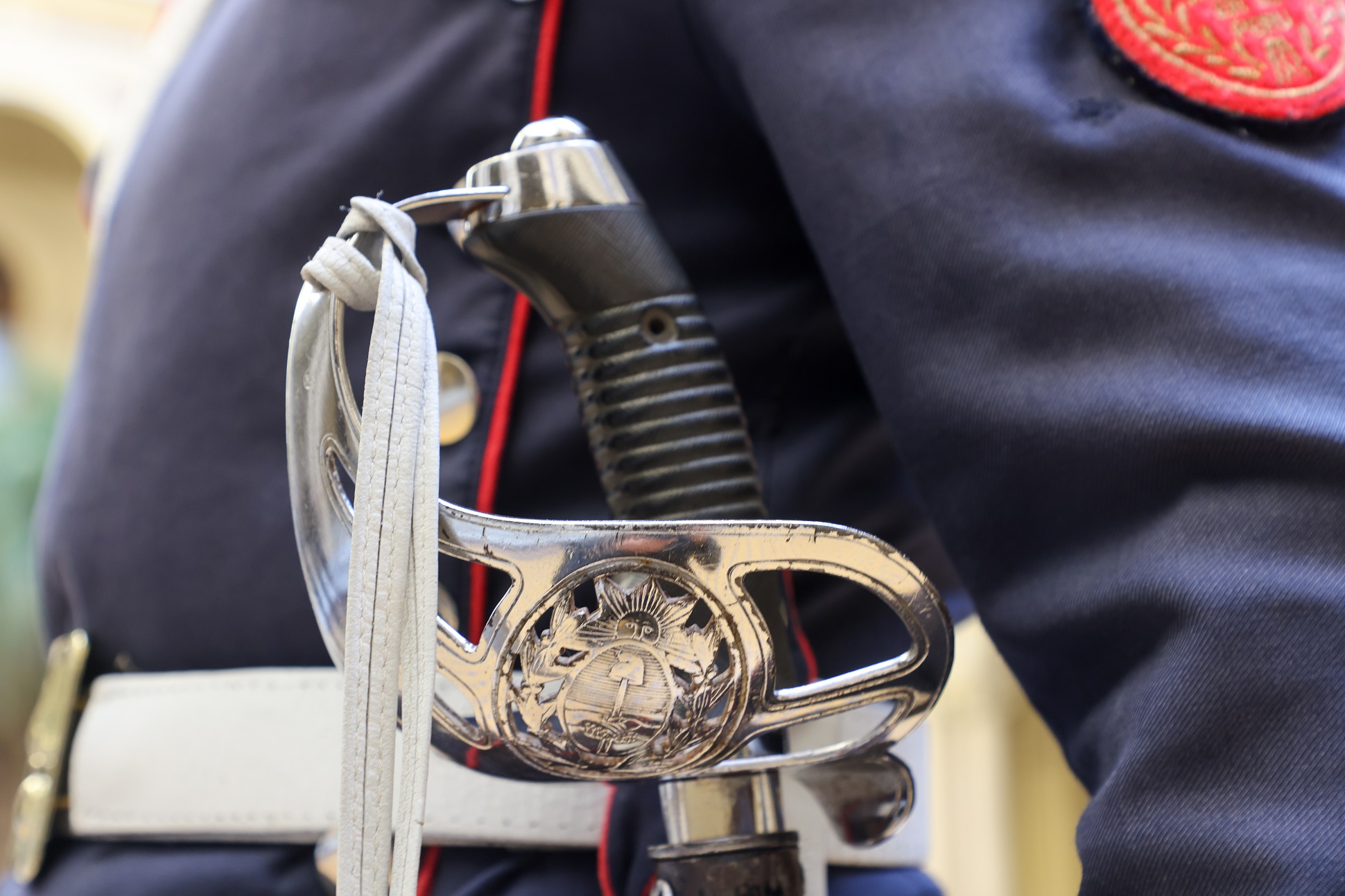
The boots are high black leather boots with spurs, protecting the knees and thighs. The spurs, designed by General San Martin, improved the handling of the horses, suitable for tall grenadiers and medium height horses.
The shield on the left sleeve of the jacket represents the grenadier's squadron.
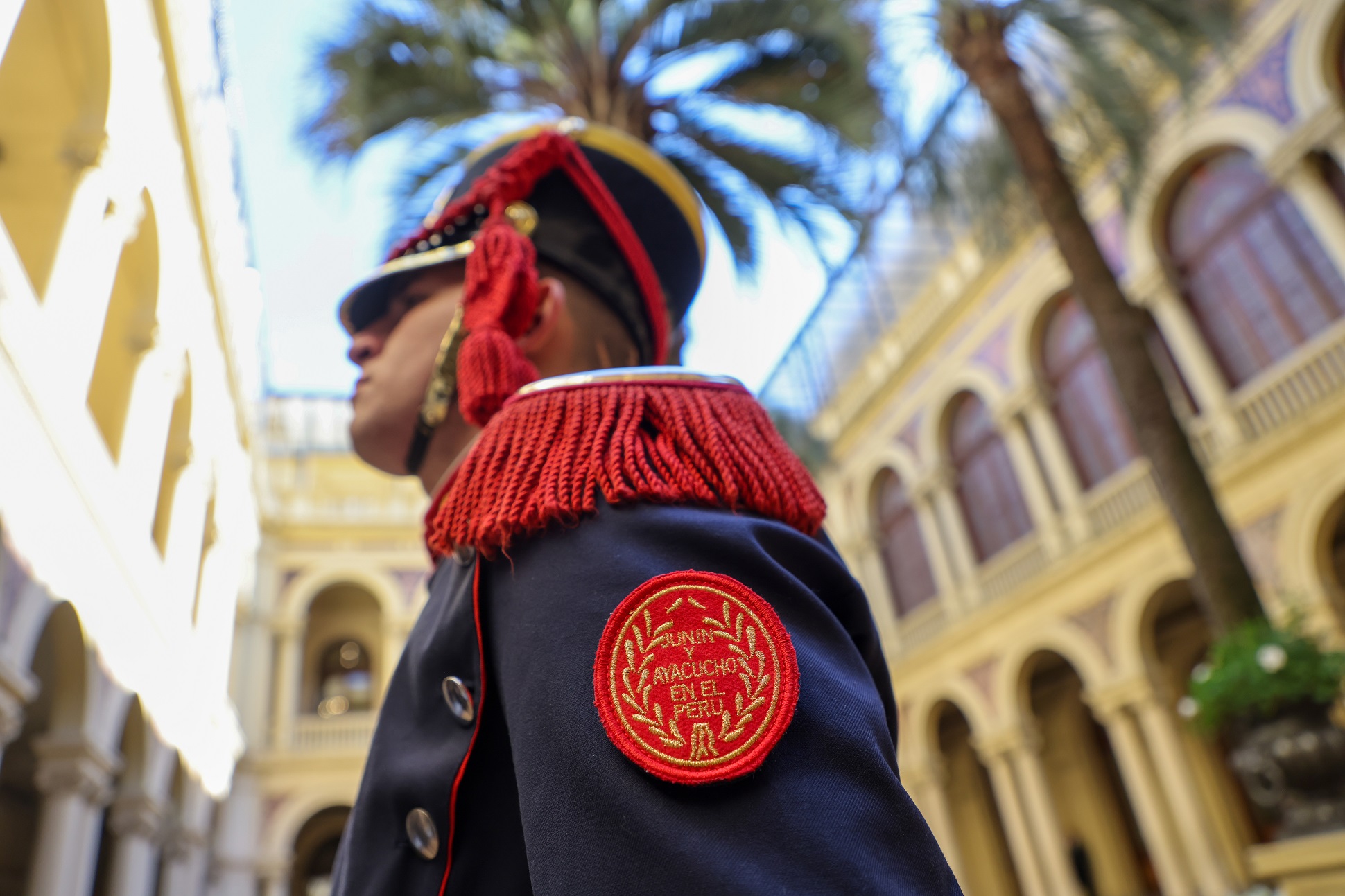
The uniform of the grenadiers, designed by General San Martin and inspired by the French grenadiers, is a historical legacy that symbolizes Argentine independence. Although the materials have changed, each element recalls its use in the past.
The General San Martin Horse Grenadiers Regiment is a living testimony of Argentina's glorious past. Today, besides being the Presidential Escort Regiment, they are still present in patriotic acts and ceremonies, embodying the values of freedom and sovereignty that San Martin instilled in his soldiers. The Liberator, aware of the need for men committed to the homeland, not only prepared them for war, but also strengthened their values, fundamental pillars of the nascent Army, which with bravery, courage, effort and blood, sowed the ideals of freedom in America.
